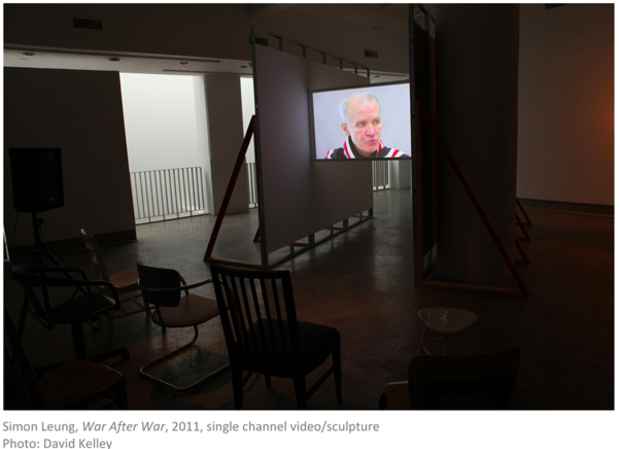"War is for the Living" Exhibition
The Sylvia Wald and Po Kim Gallery

This event has ended.
The Sylvia Wald and Po Kim Art Gallery presents War is for the Living, a group exhibition that brings together thirteen transnational, multiethnic, and intergenerational artists working in various media whose works provoke questions about a world permeated by war. These works underscore the living that comes after war and investigate what lessons the experience of war can offer us.
The earliest work in the exhibition, John Lennon and Yoko Ono’s public art work, War is Over! If You Want It (1969), considers ideation as a powerful tool for social change. Recalling the same era, Simon Leung’s War After War is a collaborative project with Warren Niesluchowski, a former World War II refugee and Vietnam War deserter whose life foregrounds the ethical challenge of reciprocity and hospitality. For her participatory action, Nancy Hwang invites Robin Kahn, who considers art a peaceful weapon and whose collaboration with Sahrawi women brings to our attention their struggle for independence from Morocco. Kahn will present segments from her dOCUMENTA (13) project video, and together with Hwang, will host two public actions during the exhibition. Irreconcilability of war memories is the subject of two works: Baghdad-born Paul Qaysi’s Misprints are purposely blurred images of U.S. military activity in Iraq, which provoke questions about how news organizations represent war; the Vietnamese transnational artist Dinh Q. Lê’s untitled photo-weavings from The Hill of Poisonous Trees situate the haunting memories of the Cambodian Genocide in relation to the Khmer Empire’s artistic accomplishments. Having also lived through the Vietnam War, An-My Lê shows the larger world of the U.S. military, its scientific, exploratory and humanitarian missions, in Events Ashore.
Representation is the key strategy for two artists: the Japanese American artist and community activist Tomie Arai’s Momotaro/Peach Boy revisits the narrative of a Japanese folk tale, used as propaganda by the Japanese military during World War II, by juxtaposing images taken from various sources. Kenyan-born, ethnic Indian artist Allan deSouza’s photo-based work Terrains exploits the medium’s unique relationship to fact, creating seemingly “familiar” scenes from daily detritus that allude to his memories of sectarian violence and became prophetic of the destruction of 9/11. That event profoundly affected two Japanese artists who experienced it in
New York City: Yoshiaki Kaihatsu’s floor installation Dust commemorates 9/11, while the Hiroshima-born, Brooklyn-based artist Hiroshi Sunairi began giving seeds from trees that survived the atomic bombing of Hiroshima to people who would plant them. Between 2001 and 2008, the documentary photographer Nina Berman created Homeland, a series of images that examines the post-9/11militarization of American life.
Curated by Chuong-Dai Vo and Midori Yamamura
Media
Schedule
from February 12, 2013 to March 23, 2013
Opening Reception on 2013-02-14 from 18:00 to 21:00